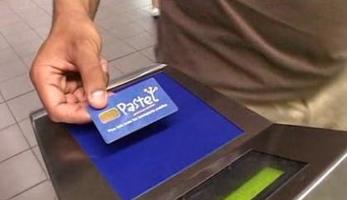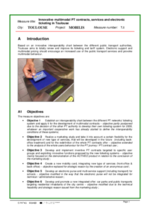Integrated tariffs for public transport using the Pastel smartcard
Summary
Toulouse aimed to renew and improve its ticketing and tariff system based on an innovative interoperability agreement between the different public transport authorities.
Implementing sustainable mobility
In 1992, a multimodal ticketing system was launched for the urban public transport network in Toulouse. The same ticket allowed public transport users to travel by bus and metro and on one railway line. The tickets were introduced to cut fare dodging and to obtain a better knowledge of passengers’ travel habits.
The objective of this measure was the complete renewal of the city’s ticketing system and tariff rates in order to develop electronic contactless ticketing and intermodal pricing.
The specific goals were to:
- establish an interoperability agreement between the ticketing systems of the different public transport networks;
- develop and implement innovative public transport contracts (for specific user groups);
- create a mobility card offering new types of services;
- develop multi-service support for schools;
- develop and promote a new integrated offer: car parks and public transportation as well as an integrated fare product between frequent road users and public transportation; and
- improve park and ride infrastructure and promote multimodal behaviour.
Progress
The smart card ticketing system and associated personalised travel card (Pastel) were launched in June 2007 and distributed to public transport annual ticket holders (around 300,000 people) when the second metro line was opened, resulting in a major extension of the public transport network.
As the local authorities requested an in-depth analysis of the passengers’ attitudes towards the new ticketing system and the impacts of the Pastel card, the overall objectives of the measure were reviewed. The measure subsequently focused on this analysis via a survey among frequent or occasional users of the new tickets and non-users, in order to gain an understanding of why people still purchase the classic tickets and to identify services that would increase passenger numbers.
In the end, Tisseo undertook only some specific demonstrations of innovative public transport products: non-personalised smart cards; and annual Activeo cards for employees whose company has developed a commuter mobility plan.
Having studied the administrative and technical conditions required to develop interoperability, the different public transport authorities postponed the implementation of the appropriate ticketing system.
Outcomes
The introduction of the smart cards contributed to creating a modern image for public transport.
The Activeo trial was very successful and contributed to achieving a modal shift from the private car to public transport or combined car and public transport journeys. Activeo subscribers were very satisfied with the card, and 90 percent expressed willingness to recommend it to friends. Its success is depended on the location of the company, awareness raising at company level, and the level of co-financing (around 50 percent) by the employer.
The marketing study revealed that the number of public transport users had increased but the rise in the number of people travelling on public transport for free (unemployed people, schoolchildren, elderly people) limited the income of the public transport operators.








